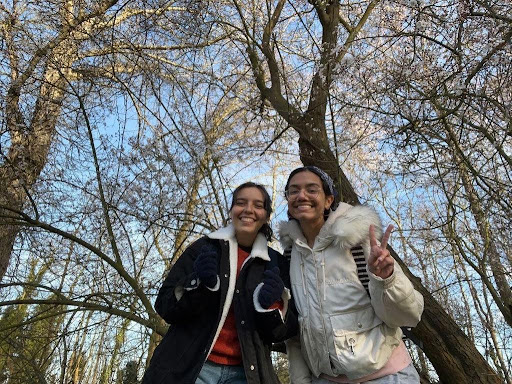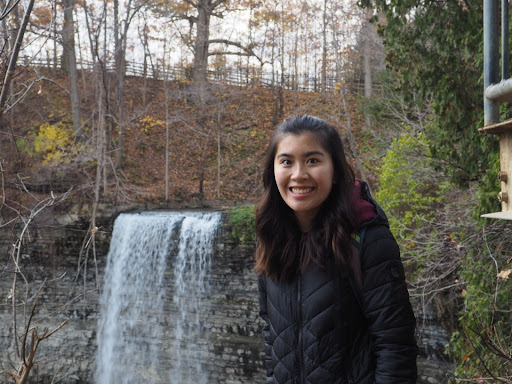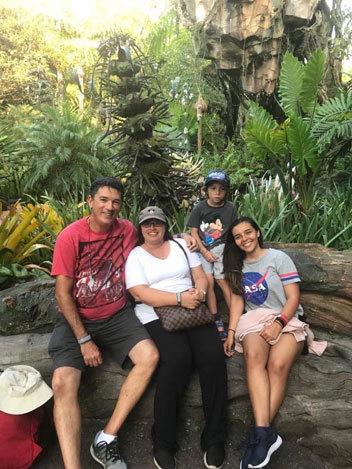Sweating and shaking as she entered a classroom without the comfort of her friend nearby, 14-year-old Jasmine Geerman felt overwhelmed by fear.
“Being completely surrounded by new people, that was kind of the first experience [of social anxiety],” she said.
Now a third-year journalism student at Carleton University, Geerman recalls this experience as the moment of realization that led to her social anxiety disorder diagnosis.
Throughout the progression of the COVID-19 pandemic, Geerman said her anxiety was heightened due to a lack of social interaction outside of her family.
Geerman’s experience is far from rare. An October 2020 study by Statistics Canada states those with pre-existing anxiety disorders suffered from worsened symptoms due to the pandemic.
When the first lockdown of the COVID-19 pandemic began in March 2020, home became a refuge for many young women of colour with anxiety like Geerman. These women no longer felt like they had to put on a performative presence while in public or worry about judgment from others as they spent months in the comfort of home with loved ones nearby.

For Cynthia Ling, a third year student at McMaster University, multiple isolated incidents made her realize she was struggling with anxiety.
In her last year of high school, Ling was diagnosed with general anxiety disorder after a series of unprompted, random anxiety attacks. She recalled always feeling anxious, but said she thought it was normal and didn’t notice any obvious triggers or stresses.
“At times, my anxiety takes over my life,” Ling said.
While anxiety can be a looming presence, Ling said she doesn’t want it to be the only thing that defines her, especially in new environments.
According to a study by the Centre for Addiction and Mental Health (CAMH), anxiety disorder diagnoses rose during the pandemic, with the two most common diagnoses being generalized anxiety disorder and social anxiety disorder. While these disorders overlap greatly, the distinctions between them are crucial in understanding their impact.

Longing for relatability
Despite a rise in mental health issues during the pandemic, racialized youth are often excluded from conversations on the topic. A number of barriers, such as the Ontario government not collecting race-based COVID-19 data at the beginning of the pandemic, keep them from getting the help they need.
Geerman said she worries about reaching out to counselling services at Carleton because of cultural differences between Canada and Aruba, where her family originates.
“Some things are just different, and I get scared that [counsellors] won’t fully understand where I’m coming from,” she said, citing vast differences in attitudes towards shame and mental health between Canada and Aruba.
This is a common concern for racialized youth when searching for therapy, explained Mariam Ismail, a child and youth therapist with the Ottawa Community Immigrant Services Organization (OCISO).
As a person of colour, Ismail said sometimes she doesn’t need her clients to explain cultural norms, such as difficulties setting boundaries, because her lived experience creates a mutual level of understanding. However, she said she also acknowledges not all Black, Indigenous and people of colour (BIPOC) share the same experiences.
“I feel like there is something I am able to bring to my clients,” she said. “I don’t want to say that I would 100 per cent of the time inherently know, but [I could help] at least foundationally.”
Struggling to connect
Ling said there’s a level of comfort that comes with seeing a racialized therapist. She considers herself fortunate to have connected with her current therapist early on in her search for help, but said she understands the difficulty of finding accessible mental health resources as a racialized person.
Before connecting with her current therapist, Ling said she encountered cultural difficulties with another therapist that made it hard for her to explain her anxiety and get help.
“I found that it was harder to connect with the therapist because they weren’t a person of colour,” Ling said.

Some youth have privacy concerns based on community affiliations, according to Ismail. Once, she said, a client was hesitant to talk to her because they belonged to the same cultural group.
“There was a little bit of reservation on her end in the beginning until we explained a little [about] what the ethics are … and what systems are in place to protect her,” Ismail said.
The health-care system can be more challenging for racialized people to access because of these cultural differences. But according to Ismail, the resources are there.
“I think it’s a matter of the organizations actually trying to actively [and] effectively promote these resources,” she said, referencing an initiative launched by OCISO last summer that garnered underwhelming engagement.
“More work to be done”
Another issue racialized youth face while accessing mental health services is a lack of authenticity from those providing these resources, according to Wala’a Farahat.
Farahat, a registered psychotherapist and co-founder of the culturally-responsive therapy provider Rubik’s Counselling Services, said social service providers often use the right language, such as “anti-racism,” but it doesn’t stop it from feeling performative.
“I think there is a lot more work to be done where [counselling is] more genuine, [and] where we see the diversity more in the organizations,” she said.
Farahat said it can be invalidating for racialized youth when they don’t see themselves represented in organizations that claim to want to help them.
When racialized youth initially struggle, Farahat said they don’t know where to get help. An initiative by the youth-led organization 20today20tomorrow attempted to tackle this issue by posting QR code stickers around places frequented by young people, such as schools or malls, to provide them with a list of accessible resources.
To Farahat, this is a step in the right direction. She said it’s encouraging to see youth-led organizations doing more of the work for mental health in the BIPOC community. There’s more openness towards accessing mental health services among racialized youth now, Farahat said, than earlier in her career.
“[Mental health has] always been taboo and there’s a little bit of shame around it,” Farahat said. “I think the [health-care] system hasn’t caught up.”
Geerman said addressing her mental health and finding the help she needed was something she and her family hadn’t encountered before.
“[It] wasn’t a problem, but it was a little bit new … it was a journey that we went on,” Geerman said.
Geerman said her mother didn’t have the same access to therapy and mental health services growing up. This led to her mother taking some time to get on board with her daughter accessing these services.
In Aruba, Geerman said she “wasn’t always taken super seriously” by mental health-care providers, compared to Canada’s healthcare system.
While it has since become less stigmatized because of a growing need for mental health services, Geerman said talking about mental health is still often considered a burden in Aruba.

Geerman, on Nov. 29, 2019 in Florida. Geerman said her family has been supportive through her social anxiety diagnosis. [Provided by Jasmine Geerman]
A saving face mentality
For Ling, her experiences with stigmatized mental health in Chinese culture and Christianity have a “saving-face mentality.”
“It’s one thing to talk about mental [illness], it’s another to really experience it first hand,” she said.
As a woman in Asian culture, Ling said she feels fortunate because she believes it’s more acceptable to openly show emotion as a woman than as a man.
Despite having a relatively positive experience at her church, she said mental health is still a “hush-hush” topic within her religious community.
“I think the conversation around it has moved forward,” she said, but added many people instinctively say things like “there’s light at the end of the tunnel” or “just pray about it.”
As a Somali woman, and formerly one of the only racialized counsellors at Carleton, Manal Haji Egeh said the pandemic and ensuing mental health issues affect racialized students in a unique way.
“The things that have always been here … the barriers to mental health care, I think that now because of everything that’s happening, the pandemic kind of uncovered it,” she said.
Haji Egeh said she understands the barriers students in Ottawa face when accessing help. She added racialized youth often balance different identities inside and outside their homes.
According to Carleton’s Health and Counselling Services, there are currently three racialized counsellors, two of whom are Indigenous, who students can request to be paired with. While offering mental health services is a step in the right direction for Carleton, Haji Egeh said having only a couple racialized therapists is not enough as the demand for care grows.
Haji Egeh said she’s noticed a rise in anxiety among students related to health or social fears as a result of the pandemic.
With her family taking precautions during COVID-19 and limiting social interactions since graduating high school three years ago, Geerman said the pandemic has had a severe effect on her social anxiety.
“The pandemic happened and then there was no practice [being in social situations],” Geerman said.
However, with a growing number of tools at her disposal, Geerman said her social anxiety is no longer an overwhelming barrier to be embarrassed about.
“Now, it’s a wall to push through,” she said.
Featured graphic by Pippa Norman.






